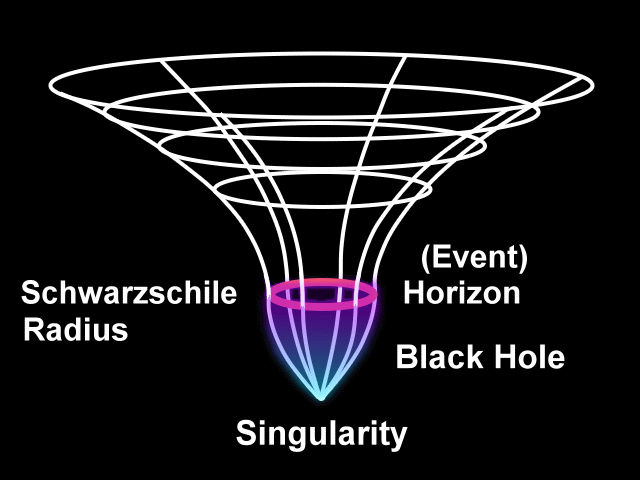

| Home Page | Overview | Site Map | Index | Appendix | Illustration | Preface | Contact | Update | FAQ |
 |
 |
The concept of black hole has its origin in a solution of Einstein's General Relativity for a spherical object with mass M and radius R. If the mass collapses to a radius less than R = 2GM/c2, where G is the gravitational constant and c is the speed of light, then nothing (including light) can escape from inside this radius. It is called the event horizon or the Schwarzschild radius (named after the astrophysicist who solved the equation). Figure 05-02a shows a schematic diagram of the Schwarzschild geometry. |
Figure 05-02a Black Hole |
Figure 05-02b Worm Hole [view large image] |
 |
It is believed that every quasar, active galactic nucleus, and even normal galactic nucleus contains a black hole with a mass of between ten million to several billion solar masses at its core. The difference in appearance is related to the intensity of the activity. Since galaxies rotate, matter falling toward the central black hole will form a rapidly spinning disk of gas - an accretion disk - rather than falling directly into the hole. Kinetic energy released by in-falling matter, and frictional effects within the accretion disk, raise the temperature of the nner parts of the disk to enormous values and provide plenty of energy to power AGN's on all scales from Seyferts to quasars. By a process that is still not fully understood but seems to be related to rotating black hole, the central engine accelerates streams of charged particles to very high speeds. The inner rim of the accretion disk, together with surrounding gas and magnetic fields, forms a nozzle that confines the outward flow of energetic particles into narrow streams that shoot out perpendicularly to the plane of the disk. Figure 05-02c shows a model of the black hole. See Black Hole Visualization, 2024 |
Figure 05-02c AGN Model |
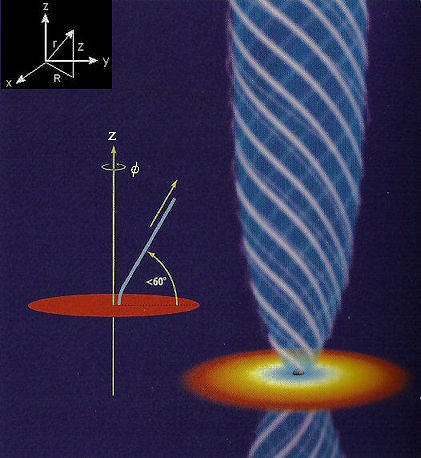 |
 |
Magnetohydrodynamics is the branch of physics dealing with the behavior of the combined system of magnet field and ionized gas at low density. A popular theoretical scenario applies such formulation to explain the relativistic jet(s) powered by the black hole. The study found that magnetic field lines are twisted into a helix (as shown in Figure 05-02d) by the differential rotation of matter in the accretion disk. Such field provide a force to expel the ionized particles in a collimated jet from the inner circumference of the accretion disk. The energy to maintain the process is derived from the braking action on the rotation of the disk. In this way, matter can slow down and eventually flow inward into the black hole. Figure 05-02e illustrates a mechanism to extract the spinning energy from a rotating black hole, wherein the surrounding ionized gas and the magnetic field act together to set up a voltage difference between the poles. This is similar to a battery driving electric current around to provide another source of energy for the outflowing jet(s). |
Figure 05-02d Magnetic Field and Jet [view large image] |
Figure 05-02e Rotating BH |
See more detail in "Magnetohydrodynamics (MHD) and the Formation of Jet(s)" |
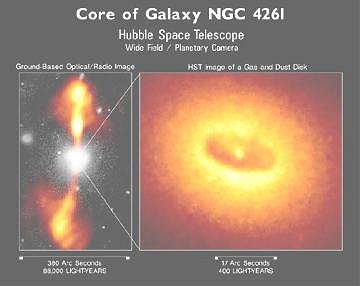 |
 |
along the source axis. Its finite width and the dashed circle indicate the currently undetermined extent. The much larger warm component (T=320K, red) is well resolved. The arrows indicate the projected orientation of the two interferometer baselines and the angular resolution L/2B, where L is the wavelength and B is the projected baseline. The image shows that the active galactic nuclei are arranged like a thick doughnut. This model requires a continuous injection of kinetic energy to maintain such cloud system. The mechanism is currently unknown; thus a better understanding of the physics of these spectacular objects is needed. |
Figure 05-02f NGC4261 |
Figure 05-02g NGC1068 |
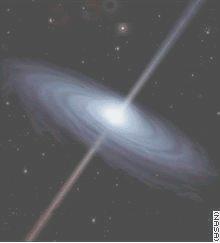 |
In a November, 2004 announcement by NASA, a black hole catalogued as SDSSp J1306 appears to be about one billion times as massive as the sun. It is 12.7 billion light-years away. A similarly massive and distant black hole was studied in the same year with the European Space Agency's XMM-Newton X-ray satellite. The object, SDSSp J1030, is 12.8 billion light-years away. These two results seem to indicate that the way supermassive black holes produce X-rays has remained essentially the same from a very early date in the universe. How such massive and energetic structures formed so quickly (only after one billion years of the big bang) remains a major puzzle for scientists. Mergers of smaller galaxies and their black holes may have played a role. Researchers suspect that black hole formation and galaxy development go largely hand-in-hand, but they cannot say which comes first. Figure 05-02h is an artist's conception of a supermassive black hole with matter swirling into it. |
Figure 05-02h BH, Supermassive |
In 2009, radio observations of 4 early galaxies (1 to 2 billion years after the Big Bang) including J1148+5251 shows that the mass ratio of central bulge to black hole is about 10 times smaller than the more recent data indicating the black hole probably came first. |
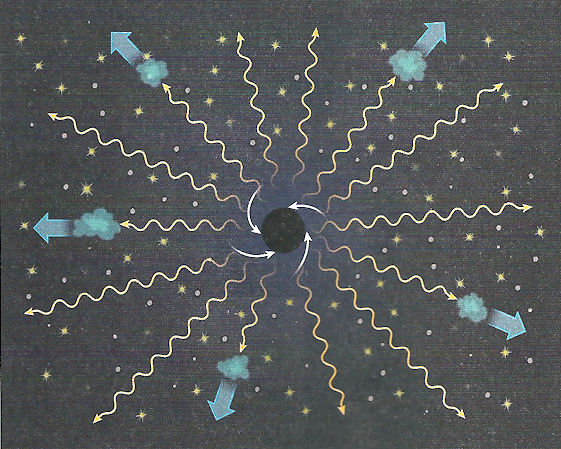 |
A 2012 update on the supermassive black hole J1148+5251 reveals that while matter swirls inward from the accretion disk toward the black hole, intense radiation creates outflow of gas at the same time. The process is shown schematically in Figure 05-02i. The orange wavy lines represent photons emitted during the accretion process. Most of them escape the galaxy, but some imping on clouds of gas (blue) and the radiation pressure drives the gas out. The stars and dark are too heavy to be affected by the radiation. It is suggested the elliptical galaxies may lost their gas component in this way. The Milky Way has a mild imitation of such process in the form of the 30-kpc arms. |
Figure 05-02i BH Gas Outflow |
 |
On 28 March 2011, the Swift satellite designed to look for gamma-ray bursts (GRBs) detected a burst with unusually long duration of more than a month. The new source, called Swift J164449.3+573451, is now believed to be generated by the tidal disruption of a star moving too close to a black hole. The left portion in Figure 05-02j shows the level of X-ray flux recoded by various detectors over the past 20 years with observational duration indicated by horizontal bars. The data indicate the gradual buildup of intensity until it suddenly flared up more than 200 times in few hours. The right portion in the same diagram is the follow-up to show the flux variation for the first 7 weeks of the most recent observation. Time interval of the variation (in luminosity) can be used to calculate the size of the |
Figure 05-02j Black Hole Cannibalism [view large image] |
source since each part of the source would have to be in contact with others on such a time scale  t to coordinate the variations; thus the size r t to coordinate the variations; thus the size r  c c  t. For the most rapid variability of t. For the most rapid variability of  t t  100 s, r 100 s, r  3x1012 cm, which is about 50 time bigger than the Sun and about 1/2 the size of Mercury's orbit. 3x1012 cm, which is about 50 time bigger than the Sun and about 1/2 the size of Mercury's orbit. |
 rc2/2G
rc2/2G  107 Msun, which is in close agreement with the estimate from the relationship between the black hole mass and galactic bulge luminosity. The unusually high luminosity may be related to the onset of relativistic jet pointing to the direction of observation and moving at a velocity of 99.5% of the speed of light.
107 Msun, which is in close agreement with the estimate from the relationship between the black hole mass and galactic bulge luminosity. The unusually high luminosity may be related to the onset of relativistic jet pointing to the direction of observation and moving at a velocity of 99.5% of the speed of light. |
In another 2011 report, the jet from M87 has been observed in great detail with the Very Long Baseline Array (VLBA), which has resolution 400 times finer than the HST. Since black hole is not a clean eater, about half of the food (the in falling star) is left behind in the accretion disk close to the black hole. Interaction of the rotating "crumbs" and magnetic field produces the jet. The observation finds a jet of high-energy particles starts as a broad flow at a distance about 14 to 23 times the |
Figure 05-02k M87 Jet |
Schwarzschild radius of the black hole. The jet becomes more cylindrical and faster with distance from the black hole. Figure 05-02k (a) is a schematic diagram showing different sections of the jet that have different particle densities observed at different frequencies, from about 200 GHz |
 |
 |
M87 used to hold the title of harbouring the most massive black hole with a mass of 6.3x109 Msun. The record was broken in 2011 with the detection of 2 super massive black holes in NGC 3842 (within the Abell 1367 cluster) and NGC 4889 (within the Coma cluster) both with a mass of about 1010 Msun. These giant galaxies all sit at the bottom of the cluster's gravitational potential well collecting a lot of the material falling inward. Estimate of black hole mass depend on |
Figure 05-02l Black Hole Correlations |
Figure 05-02m Black Hole Formation [view large image] |
either the measurement of stellar (or gas, or maser emission from molecular clouds etc.) velocity dispersion  or V-band galactic bulge luminosity Lv. The data points usually fall on (or near) a straight or V-band galactic bulge luminosity Lv. The data points usually fall on (or near) a straight |
 |
presented astronomers with a problem to explain how could it be created so soon and so big? It is known that the acquisition of material by the black hole is always balanced by ejection of some of the in-falling matter. It has been calculated that a black hole sucking in matter continuously at its maximal rate would double its mass Mbh every 50x106 years, i.e., Mbh=M0x277/5~ 4x104M0, where M0 is the initial mass. This is too slow for a seed black hole of stellar mass to grow into billion-sun in 770x106 years (Figure 05-02o,a). |
Figure 05-02n Supermassive Black Hole [view large image] |
 |
Two different theories has been proposed to resolve the problem. They all try to make the basic component from solar-mass black hole to middleweight one with mass of 105 to 2x106 Msun, i.e., to bump up M0. One theory suggests that black hole at the center of a star cluster could grow quickly enough to middleweight seed hole (Figure 05-02o,b). The other one involves collapse of primordial gas cloud (Figure 05-02o,c). The former scenario predicts more leftover middleweight seed holes to survive into the present age. Since only a few hundred such holes among 2x105 galaxies have been found so far, it seems that the odd is against the bottom-up version at least for now (see also related observation in Baby Galaxy). |
Figure 05-02o Supermassive Black Hole Formation |


 ________________________________________
________________________________________ /
/ ~ 0.3 (To get something to collapse in some direction you need one region to be at least a little bit more dense than the average. THAT is what an "overdensity" is), radiation pressure cannot halt collapse and an event horizon forms
~ 0.3 (To get something to collapse in some direction you need one region to be at least a little bit more dense than the average. THAT is what an "overdensity" is), radiation pressure cannot halt collapse and an event horizon forms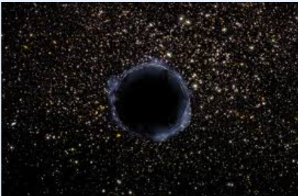 ,
, 
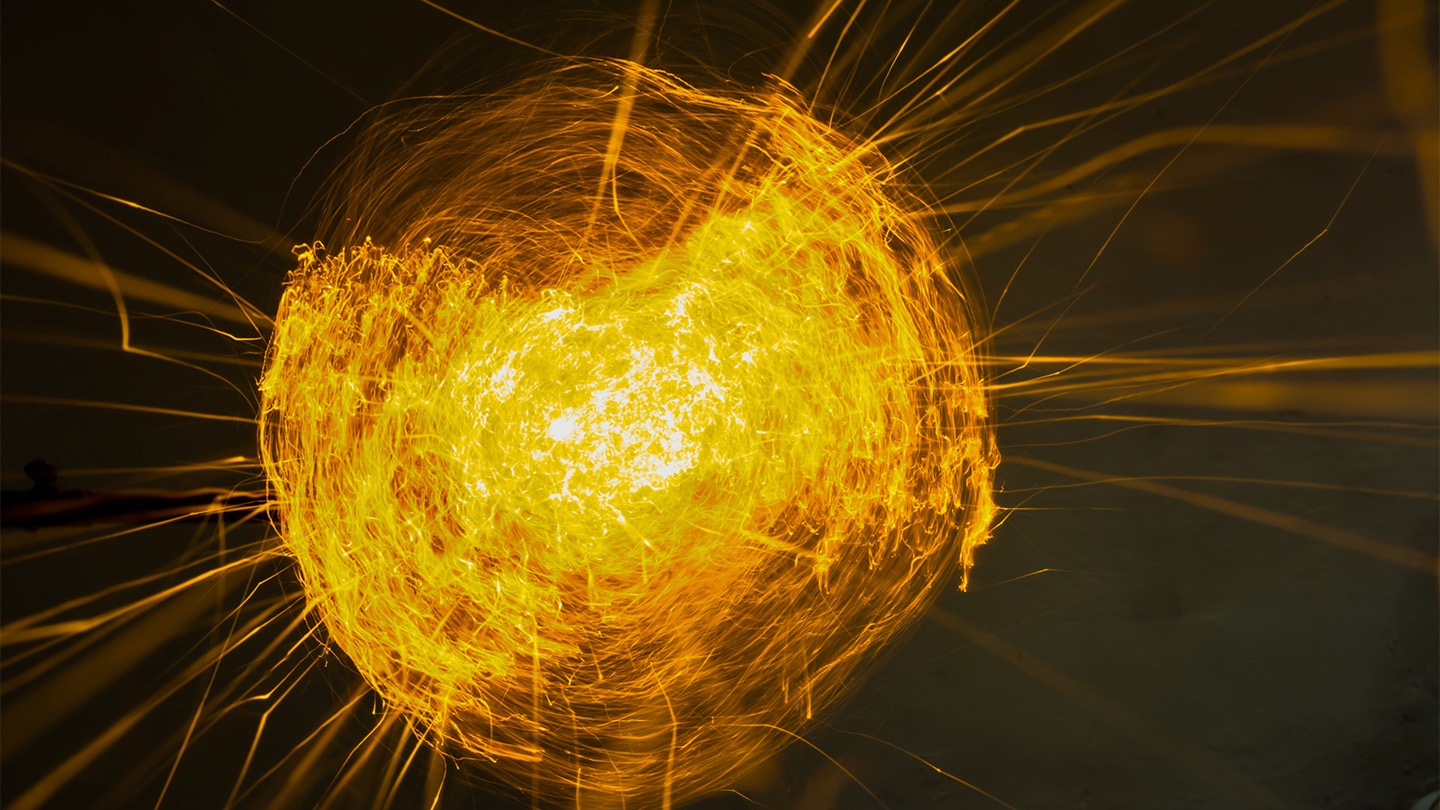
 0 before SSB
0 before SSB W, and Z could slow to v
W, and Z could slow to v c, enabling new structures: baryons, atoms, stars.
c, enabling new structures: baryons, atoms, stars.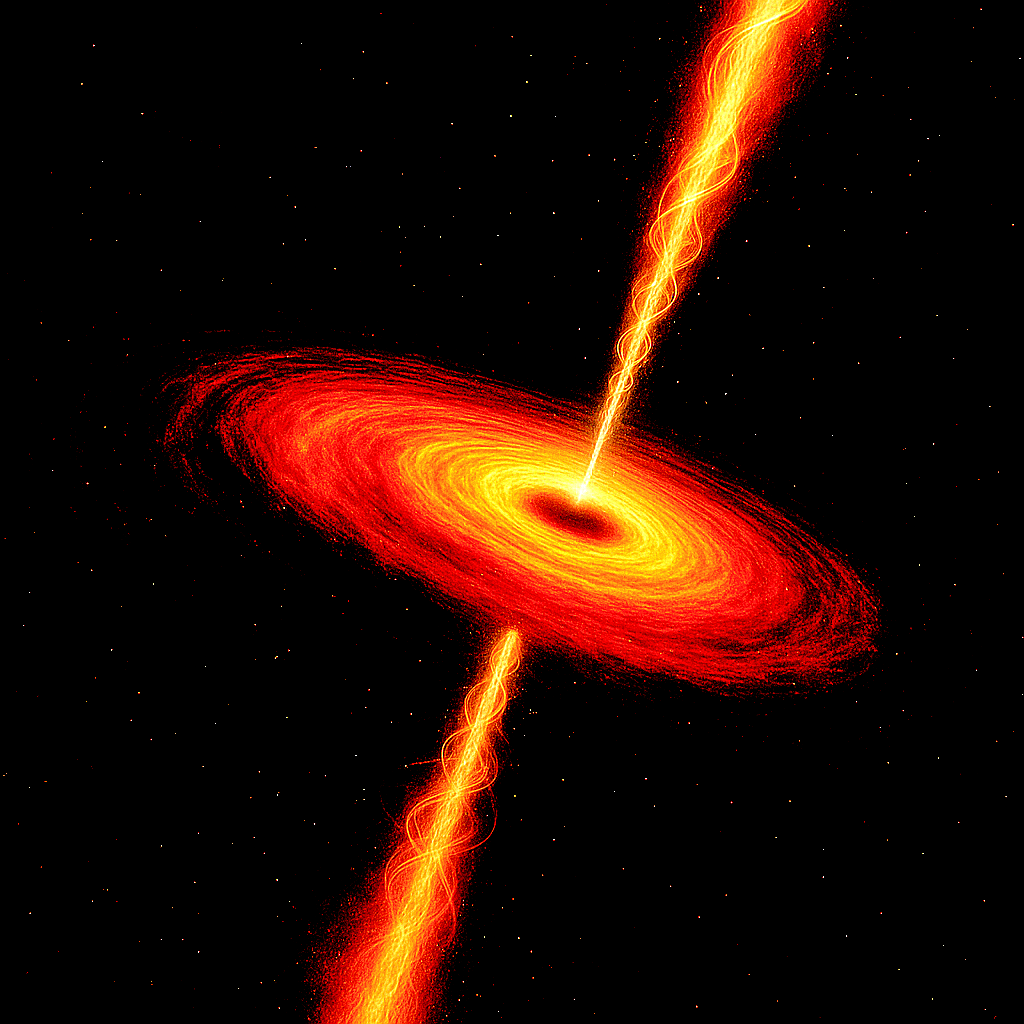
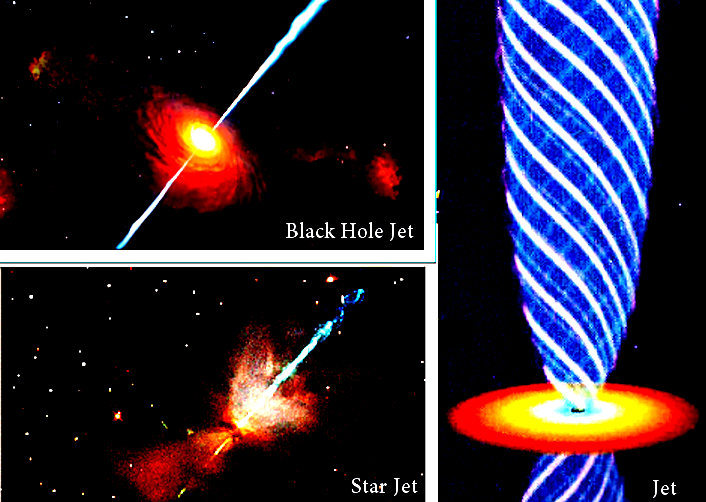
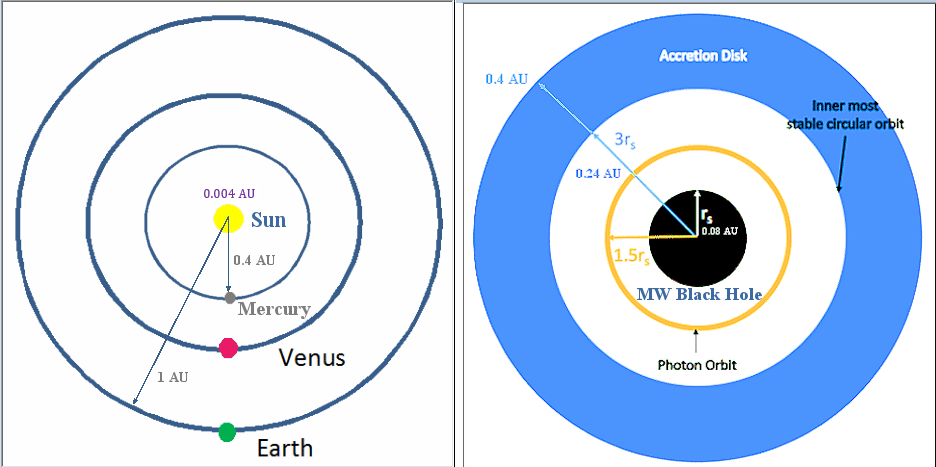

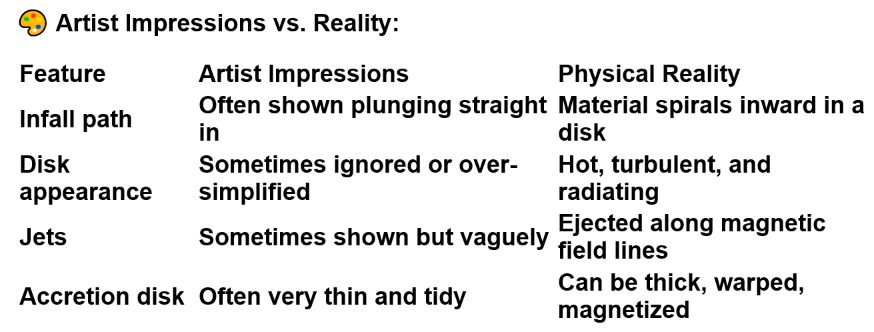
 ,
, 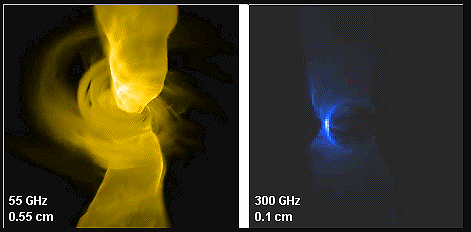 ,
,  see video (frequency dependence)
________________________________________
see video (frequency dependence)
________________________________________
